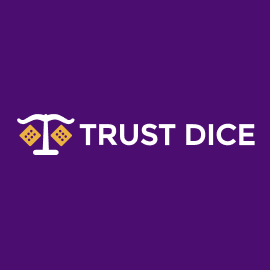Risk is a part of everyday life. People face uncertain outcomes in many situations. However, not everyone understands how to approach risk effectively. This article explores a simple coin flip game that reveals surprising insights about risk perception.
The Game Setup

The Coin Flip Challenge
Consider a straightforward game involving a coin flip. The rules are simple and clear:
- Heads: Win $200
- Tails: Lose $100
The initial bet for each flip is $100. This setup creates a clear advantage for the player. The expected value is positive. On average, players would gain $50 per flip.
Let’s break down the math:
- Probability of heads (win): 50% or 0.5
- Probability of tails (loss): 50% or 0.5
- Win amount: $200 (you win $200 on top of your $100 bet)
- Loss amount: $100 (you lose your $100 bet)
Expected value = (0.5 × $200) + (0.5 × -$100) = $100 – $50 = $50
This means, on average, each flip is worth $50 to the player. Despite this advantage, many people hesitate to play.
The Surprising Reactions
Reluctance to Play
Many people refuse to play the game. They see the potential loss as too risky. This reaction is puzzling given the clear statistical advantage to players.
Limited Participation
Even those who agree to play often limit their participation. They might flip once or twice. Few are willing to play repeatedly. This behavior goes against mathematical logic.
Understanding the Disconnect
Fear of Loss
The game reveals a common psychological barrier. People often fear losses more than they value equivalent gains. This phenomenon is called loss aversion. It can lead to irrational decisions.
Short-term Thinking
Many participants focus on individual flips. They worry about losing $100 on a single toss. This short-term view ignores the long-term advantage of repeated play.
The Power of Multiple Trials
Law of Large Numbers
In probability, more trials lead to more predictable outcomes. This principle is the Law of Large Numbers. With many coin flips, results approach the expected average.
Reducing Volatility
More flips reduce the impact of short-term luck. Good and bad luck balance out over time. The player’s results start to reflect the true odds.
A Simple Mathematical Breakdown
Expected Value Calculation
We’ve already calculated the expected value of $50 per flip. Let’s look at some examples:
- After 10 flips:
Expected value = 10 × $50 = $500 - After 100 flips:
Expected value = 100 × $50 = $5,000
Probability of Overall Loss
The chances of losing money decrease with more flips. After 10 flips, the probability of being behind is about 17%. After 100 flips, it’s less than 1%.
To understand these figures, we can use the binomial probability formula:
P(X ≤ k) = Σ(n choose i) × p^i × (1-p)^(n-i), where i goes from 0 to k
For 10 flips:
n = 10 (number of flips)
p = 0.5 (probability of winning each flip)
k = 4 (we lose money if we win 4 or fewer times)
Using a binomial probability calculator, we get approximately 0.17 or 17%.
For 100 flips:
n = 100
p = 0.5
k = 49 (we lose money if we win 49 or fewer times)
Using the same calculator, we get approximately 0.0056 or 0.56%.
Real-World Applications
Investment Strategies
This game mirrors principles of long-term investing. Diversification and patience often lead to better outcomes. Short-term market swings matter less over time.
Insurance Industry
Insurance companies use similar principles. They take many small risks. Over time, the odds work in their favor. This strategy allows them to remain profitable.
Let’s consider a simple example:
An insurance company sells 1,000 policies for $1,000 each. They expect 1% of policyholders to make a claim of $50,000.
Revenue: 1,000 × $1,000 = $1,000,000
Expected Payout: 1% × 1,000 × $50,000 = $500,000
Expected Profit: $1,000,000 – $500,000 = $500,000
Even if slightly more claims occur, the company remains profitable due to the large number of policies sold.
Innovation and Entrepreneurship
Successful innovators often take calculated risks. They understand that not every attempt will succeed. However, the overall strategy can lead to significant gains.
Psychological Barriers to Optimal Decisions
Overemphasis on Short-term Outcomes
People often focus too much on immediate results. This mindset can lead to missed opportunities. Long-term thinking is crucial for success in many areas.
Misunderstanding Probability
Many struggle with basic probability concepts. This lack of understanding can lead to poor decisions. Education in this area could greatly benefit society.
Emotional Decision Making
Emotions often override logic in financial decisions. Fear and greed can lead to suboptimal choices. Developing emotional intelligence is key to better decision-making.
Improving Risk Assessment Skills
Developing a Long-term Perspective
Encouraging people to think beyond immediate outcomes is crucial. This skill applies to many life decisions. It can lead to better financial, career, and personal choices.
Embracing Calculated Risks
Learning to take smart risks is a valuable life skill. It involves assessing probabilities and potential outcomes. This approach can lead to more opportunities and success.

Conclusión
The coin flip game reveals much about human nature. It shows how people often misunderstand risk and probability. Many miss out on favorable opportunities due to fear or misperception.
Understanding these principles can lead to better decision-making. It applies to finance, career choices, and personal life. By learning to assess risk properly, people can make more informed choices.
This game serves as a simple yet powerful lesson. It demonstrates the importance of mathematical thinking in everyday life. It also highlights the need for better understanding of probability and risk assessment.
Ultimately, the ability to understand and navigate risk is a crucial life skill. It can open doors to new opportunities and lead to better outcomes. By embracing calculated risks, individuals can potentially improve their lives in many ways.
Ready to test your risk perception? Try your luck with a coin flip game and see how your decisions stack up against statistical odds. Play now and discover what you can learn about yourself!






